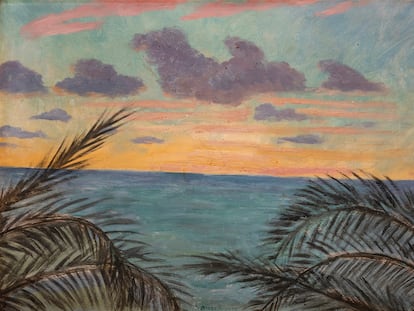Frida Kahlo narrates her life: ‘I’ve had high praise from Kandinsky, Picasso and other big shits of surrealism’
A Sundance-honored documentary by Peru’s Carla Gutiérrez uses letters, essays and interviews to convey the artist’s unease and pain
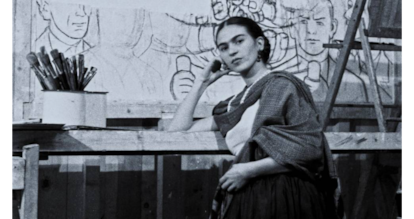

Director Carla Gutiérrez admits that for decades, she was obsessed with the persona of painter Frida Kahlo. She grew up with her story, and like millions of others, felt a closeness with Kahlo’s art. At 19 years old, Gutiérrez, who is from Peru but who has lived in the United States for years, felt challenged by the work of the Mexican artist when she first beheld Kahlo’s painting Self-Portrait on the Borderline Between Mexico and the United States, in which, as a recent arrival from Latin America, Gutiérrez saw herself reflected, missing her homeland “desperately” and “navigating” a new world.
She immersed herself in the writings that Kahlo had left in her diary, her numerous letters, essays and interviews that were published by her era’s print media. It was through these texts, which were available and accessible by the public, that Gutiérrez realized that there were enough fragments of Kahlo’s voice for her to tell the artist’s story. “She left us hundreds of documents, written pieces. They are really a very rich testimony with emotional reactions to what was happening to her at that time. The documentary doesn’t include every detail of her life, what we really wanted was for the public to get to know her spirit, above all,” explains Gutiérrez in a videocall.
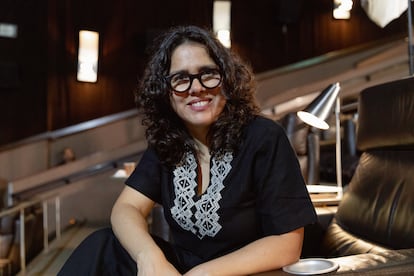
And so was born Frida, a documentary that took around a year and a half to finish, and received the Jonathan Oppenheim Editing Award at the most recent Sundance Film Festival. Its intimate and unabashed narration takes on subjects that troubled the well-known painter, such as her art’s transcendence, her relationship with Mexico and her spouse Diego Rivera, her desire to be a mother, sexual pleasure and the lifelong bodily pain from the after-effects of a train accident in her youth.
“The exhibition will open at the Pierre Cole Gallery, which according to what they tell me is among the best here [in Paris]. There was a huge number of people on the day of the opening. Big congratulations from Joan Miró. High praise from Kandinsky, and congratulations from Picasso and other big shits of surrealism, but those rich bastards didn’t want to buy anything. I don’t have the honor of belonging to the elite among the famous artists. The men are kings. It is they who run the world,” says a fragment read by the actress Fernanda Echevarría, who gives voice to Frida in the documentary. The excerpt speaks to the Mexican artist’s exasperation with surrealism during her visit to the French capital, organized by the writer and poet André Breton.
As in this example, Gutiérrez constructs a series of themes that give shape to the documentary, among which we find the frustration that Frida had with her physical challenges, her search for pleasure and her sense of oppression from being a woman of the time. How she spoke “in a very beautiful way” with her lovers about sex and how, in another moment, her fragility comes through when she writes in another text about the spontaneous abortion she underwent. The United States’s reaction when she accompanied Diego Rivera to work on his commissions for Edsel Ford and the Rockefeller family in Detroit and New York, respectively, how colors evoked her different states of mind, and even the love she felt for Mexico during the sad moments of her life.
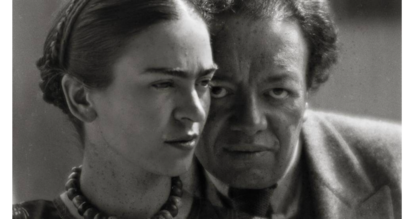
“She spoke very loudly in her writings and we have to listen to her. For us, it was important that she guide us when it came to the emotional side. We felt as if we had given her the microphone and she did not want to let it go,” says the director.
The research process for the documentary, which debuted on March 14 and played at the Sundance Festival CDMX, included an authorized “raid” on the attic of Hayden Herrera, an art historian and biographer whose work on Kahlo has been the basis of many academic texts about the artist, beginning back in the 1980s. It was there that the film’s team found materials that Herrera had used for her book Frida: A Biography of Frida Kahlo (1983), on which the film adaptation starring Salma Hayek was also based, and which has been stored away for more than four decades.
“That research helped us to uncover the primary sources of Frida’s written work and offered us an even more complete understanding of her life. We also found transcriptions of complete interviews with people who had been very close to her. Some of those voices are in our film,” adds the director.
But the documentary, which is now available on Prime Video, looks to not just bring back Frida’s voice through her texts, but also give life to her images, those postcards from her era, and even some of her most representative works, like The Two Fridas (1939), Diego and I (1949) and Henry Ford Hospital (1932), to name a few. Gutiérrez and her team made a “risky” decision and added an animation process that accompanies the film’s footage in certain sections. They colorized certain black-and-white photos to make Frida’s paintings come to life and tell her story, a process led by designers Sofía Cáceres and Renata Galindo, and a soundtrack was created for the film by Michoacán composer Víctor Hernández Stumpfhauser.
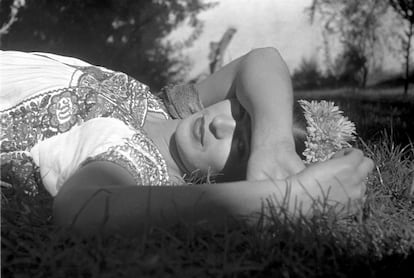
“How does one dare to touch Frida’s art? For me, it was important to bring it to a cinematic space. I wanted the art to take on life within the telling of the story and to be able to guide the viewers’ eyes to a specific emotional content in her paintings, to create connection between them and the lived experiences that had inspired these creations. I felt that the explosion of color in her paintings was an opportunity. They were like another narrative voice,” Gutiérrez says.
The experienced editor and debut filmmaker’s documentary provides context for Frida’s success and mythology. In an oracle-like fashion, the artist even predicted, in a manner both cheeky and irreverent, the recognition that she would receive after she passed in 1954. “I think that after my death I’m going to be the biggest piece of shit in the world,” said the painter in one of the letters cited in the film.
Insecure, happy, sad, doubting, jealous, far from the pop icon that the world perceives her to be — this is how Frida is portrayed, listened to, conceptualized. “From her own fragility, more humanely. It’s as if you were seated in front of a person and it was your friend, telling you their secrets,” sums up the filmmaker.
Sign up for our weekly newsletter to get more English-language news coverage from EL PAÍS USA Edition
Tu suscripción se está usando en otro dispositivo
¿Quieres añadir otro usuario a tu suscripción?
Si continúas leyendo en este dispositivo, no se podrá leer en el otro.
FlechaTu suscripción se está usando en otro dispositivo y solo puedes acceder a EL PAÍS desde un dispositivo a la vez.
Si quieres compartir tu cuenta, cambia tu suscripción a la modalidad Premium, así podrás añadir otro usuario. Cada uno accederá con su propia cuenta de email, lo que os permitirá personalizar vuestra experiencia en EL PAÍS.
¿Tienes una suscripción de empresa? Accede aquí para contratar más cuentas.
En el caso de no saber quién está usando tu cuenta, te recomendamos cambiar tu contraseña aquí.
Si decides continuar compartiendo tu cuenta, este mensaje se mostrará en tu dispositivo y en el de la otra persona que está usando tu cuenta de forma indefinida, afectando a tu experiencia de lectura. Puedes consultar aquí los términos y condiciones de la suscripción digital.
More information
Archived In
Últimas noticias
Welcome to the post-religion era: The idea of Christianity as the absolute truth has become obsolete
‘I thought you would like it’: The risky sexual practice popularized by TV shows and TikTok
The digitalization of tourism: ‘They promise experiences and gave us the worst possible one’
Mexican peso defies uncertainty with forecasts of a new period of stability in 2026
Most viewed
- Sinaloa Cartel war is taking its toll on Los Chapitos
- Oona Chaplin: ‘I told James Cameron that I was living in a treehouse and starting a permaculture project with a friend’
- Reinhard Genzel, Nobel laureate in physics: ‘One-minute videos will never give you the truth’
- Why the price of coffee has skyrocketed: from Brazilian plantations to specialty coffee houses
- Silver prices are going crazy: This is what’s fueling the rally
